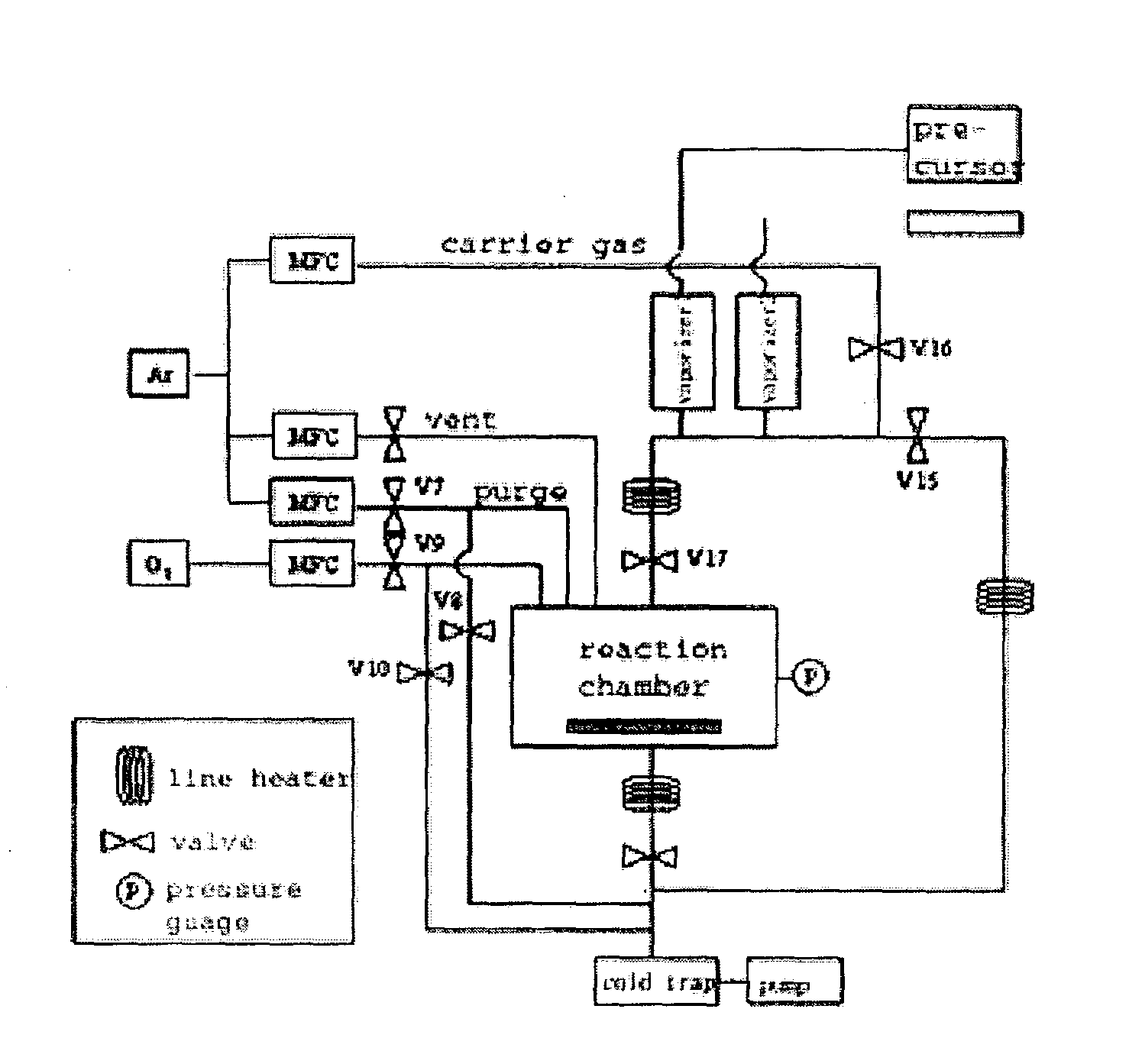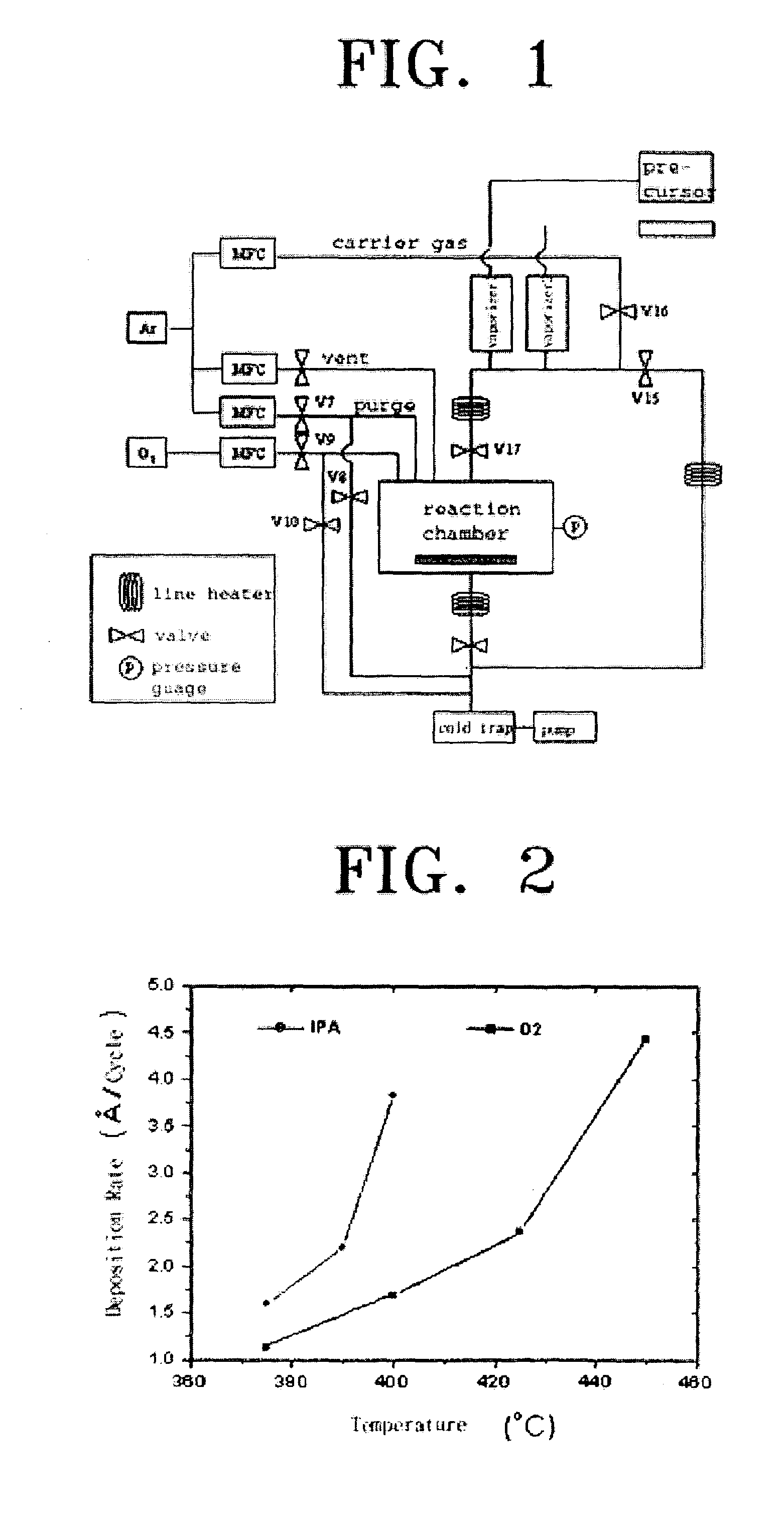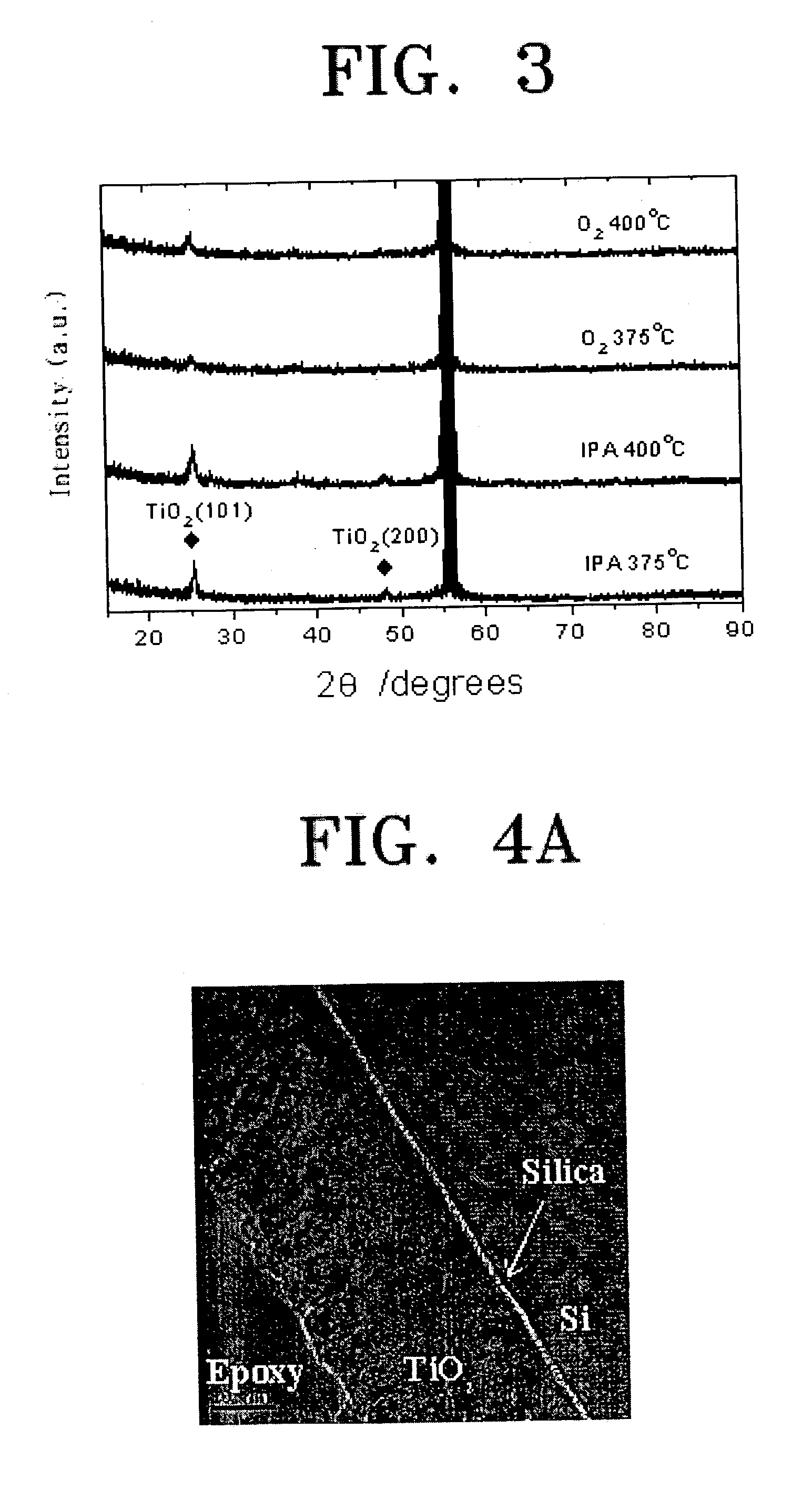Chemical vapor deposition method using alcohol for forming metal oxide thin film
- Summary
- Abstract
- Description
- Claims
- Application Information
AI Technical Summary
Benefits of technology
Problems solved by technology
Method used
Image
Examples
example 1
Deposition of TiO2 by Using IPA as a Reactant Gas
[0053]A first reactant was 0.1 M of a solution in which Ti(mpd)(thd)2, which is a Ti precursor with a diketone ligand, was resolved in n-butyl acetate, and a second reactant was IPA. The apparatus of FIG. 1 was operated in the ALD mode, and the deposition temperature was 375–400° C. and the reaction chamber pressure was about 1 Torr (the pressure may vary according to the deposition temperature). A cycle of deposition was performed as follows. First, the reaction chamber was purged with 300 sccm of argon for two seconds. Then the first reactant was introduced into the reaction chamber with argon used as a carrier gas. Here, argon was flowed at a rate of 150 sccm for 0.5 seconds. In the next step, the reaction chamber was purged with 300 sccm of argon for one second, and the second reactant (IPA) was introduced into the reaction chamber by using argon as a carrier gas. Here, argon was flowed at a rate of 150 sccm for 0.5 seconds. The o...
example 2
Fabrication of TiO2 Capacitor and Electrical Characteristic Thereof
[0057]To appraise the electrical characteristics of the deposited TiO2 thin film, 100 cycles of deposition by using oxygen was performed to form a 600 Å of a TiO2 thin film; and 70 cycles of deposition by using IPA, to obtain 700 Å of TiO2 thin film on an Al2O3 (7 Å) / Ru(1000 Å) / Si wafer at 470° C. in the same process of Comparative Example 1 and Embodiment 1, respectively. Then, a TiO2 capacitor was fabricated by carrying out DC magnetron sputtering and forming a Ru top electrode (700 Å). FIG. 6, which illustrates the electrical characteristics of each capacitor, shows that the leakage current of the TiO2 thin film deposited by using IPA is small. The reason seems in the fact that the TiO2 thin film deposited by oxygen makes a columnar growth while that of using IPA makes a granular growth, thus forming less leakage paths than the columnar structure, as seen in FIG. 4.
[0058]The present invention suppresses the direct...
PUM
| Property | Measurement | Unit |
|---|---|---|
| Time | aaaaa | aaaaa |
| Current | aaaaa | aaaaa |
| Microstructure | aaaaa | aaaaa |
Abstract
Description
Claims
Application Information
 Login to View More
Login to View More - R&D
- Intellectual Property
- Life Sciences
- Materials
- Tech Scout
- Unparalleled Data Quality
- Higher Quality Content
- 60% Fewer Hallucinations
Browse by: Latest US Patents, China's latest patents, Technical Efficacy Thesaurus, Application Domain, Technology Topic, Popular Technical Reports.
© 2025 PatSnap. All rights reserved.Legal|Privacy policy|Modern Slavery Act Transparency Statement|Sitemap|About US| Contact US: help@patsnap.com



